Qatar World Cup Stadiums: Everything you Need to Know
Due to the tight nature of the FIFA World Cup 2022 schedule, fans will be able to enjoy many games each day.
The stadium, training facilities, and fan zone all utilize solar-powered cooling systems. This means that each stadium is environmentally friendly and climate-controlled.
Qatar’s history must be maintained because the country’s population is fewer than 3 million. The event’s organizers have pledged to construct stadiums using modular components in order to leave a lasting impression on the globe outside of Qatar.
After the event, 170,000 seats will be dismantled and handed to underprivileged countries. In underdeveloped countries, 25,000-seat to 40,000 seats stadiums will be provided, leaving Qatar with 20 to 25 stadiums.
Al Janoub Stadium
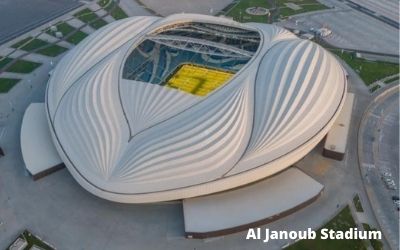
A sports complex including a 40,000-seat stadium, cycling and equestrian trails, shops, cafés, and sports clubs is located near Al Wakrah.
Following the World Cup, the Qatar Stars League will have 20,000 seats available, creating an electric atmosphere. The organizers have confirmed to be planning to use it for the group matches and round of 16.
Stadium 974
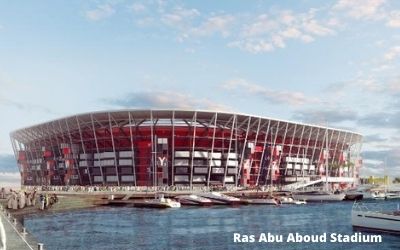
Ras Abu Aboud is a game-changing project in the field of sports stadium development. The stadium, which was constructed entirely of shipping containers, will be deconstructed and the materials repurposed.
The stadium is a short distance from Hamad International Airport and provides views of the Gulf of Oman and the West Bay structures.
The matches planned to take place in Ras Abu Aboud Stadium are group matches and round of 16.
Al Thumama Stadium
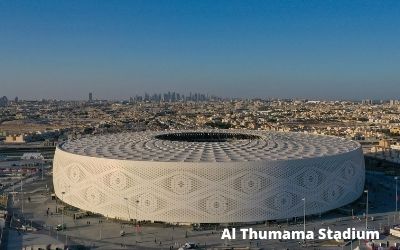
Its design is based on qahfiyya, an archaic type of Arab football prevalent throughout the Middle Ages (cap worn under the Ghutra and Egal). This design was picked since it is shared by Arabs. It exhibits the cultural and historical treasures of Arab civilisation.
Both Hamad International Airport and Doha’s southern regions have easy access to the stadium by car. The 20,000-seat stadium will be dismantled after the event and donated to underprivileged nations.
The officials have confirmed to use the stadium for World Cup 2022 group matches, round of 16, and quarter finals.
Khalifa International Stadium
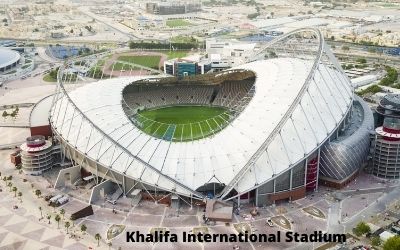
During Qatar’s hosting of the 2006 Asian Games, the original Khalifa International Stadium was completely restored and expanded.
The stadium serves as the main point of Aspire Zone, which also includes the Aspire Academy for Sports Excellence, Hamad Aquatic Centre, and ASPETAR Sports Medicine Hospital.
The 3-2-1 Qatar Olympic and Sports Museum connects the museum to the stadium, demonstrating how the area honors its history while simultaneously looking to the future.
FIFA World Cup 2022 organizers will use Khalifa International Stadium for group matches, round of 16, and play off for the third place game.
Education City Stadium
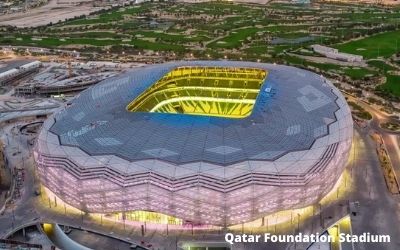
Near Qatar’s global excellence center is the new Education City Stadium.
40,000 people can be accommodated in the diamond-shaped stadium. To get to the event, guests can either drive or ride the metro. Following the World Cup, university teams will have access to 25,000 seats for their matches.
In line with Qatar’s National Vision 2030, the Qatar Foundation Stadium will be a symbol of progress, innovation, and sustainability for many years to come.
The event organizer has appointed Qatar Foundation Stadium for the World Cup 2022 Group matches, round of 16 and quarter-finals.
Also Read:
Lusail Stadium
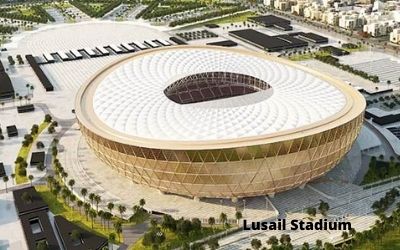
The new Lusail Stadium near Al Daayen will host the 2022 World Cup final.
It will host all matches through to the final match of the World Cup 2022.
Fans may also use the Doha Metro, Lusail Light Rail Transit, and newly refurbished motorways to get to games.
Al Bayt Stadium
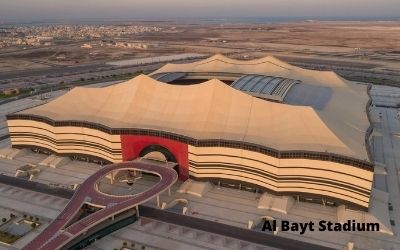
The 60,000-seat stadium was created by the Aspire Zone Foundation. Due to its unusually large tent construction, it is known as the bayt al sha’ar as a nomad camp in Qatar and the Gulf region.
The stadium’s design pays homage to Qatar’s past and present while also emphasizing sustainability. After the event, seats in the stadium’s upper levels will be given away.
The officials will use this stadium for the opening game and all matches through to the semi-finals event.
Ahmad Bin Ali Stadium
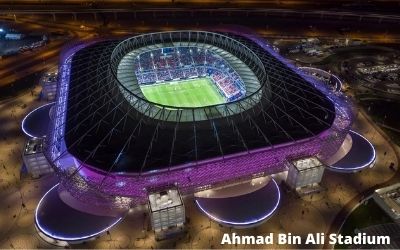
For the FIFA World Cup in 2022, Al-Rayyan Stadium will be expanded to 40,000 seats using modular parts.
The “spectacular undulating façade” is a symbol of Qatari identity. The seats will be donated to football development efforts in other countries after the event. The officials will use this stadium for the group matches and round of 16.
